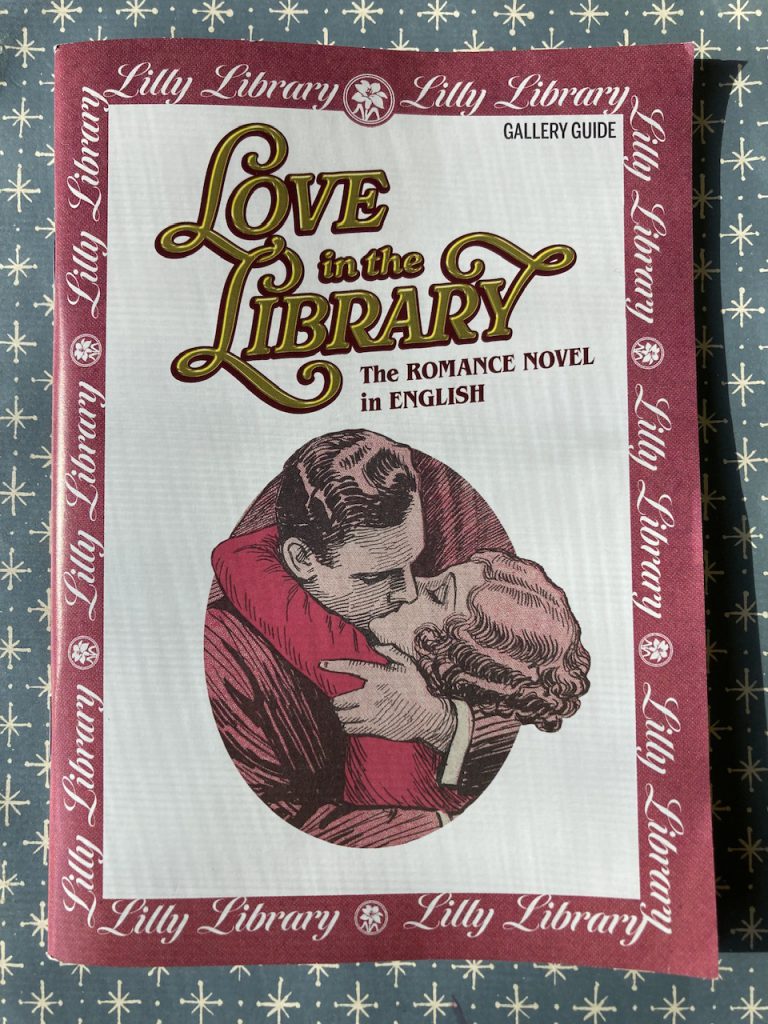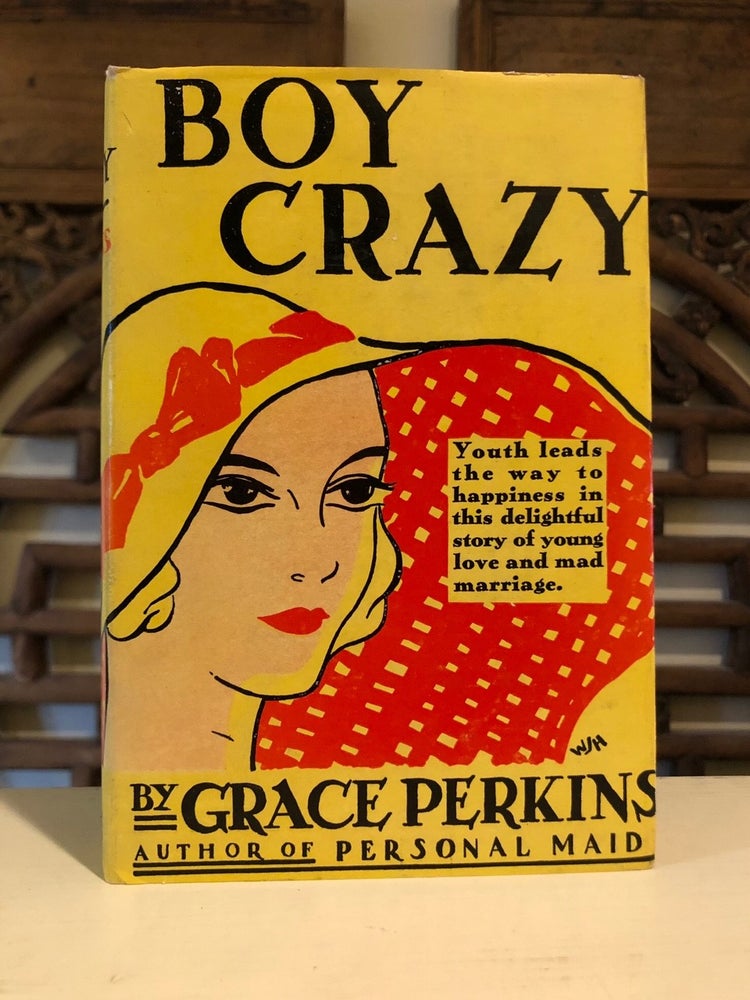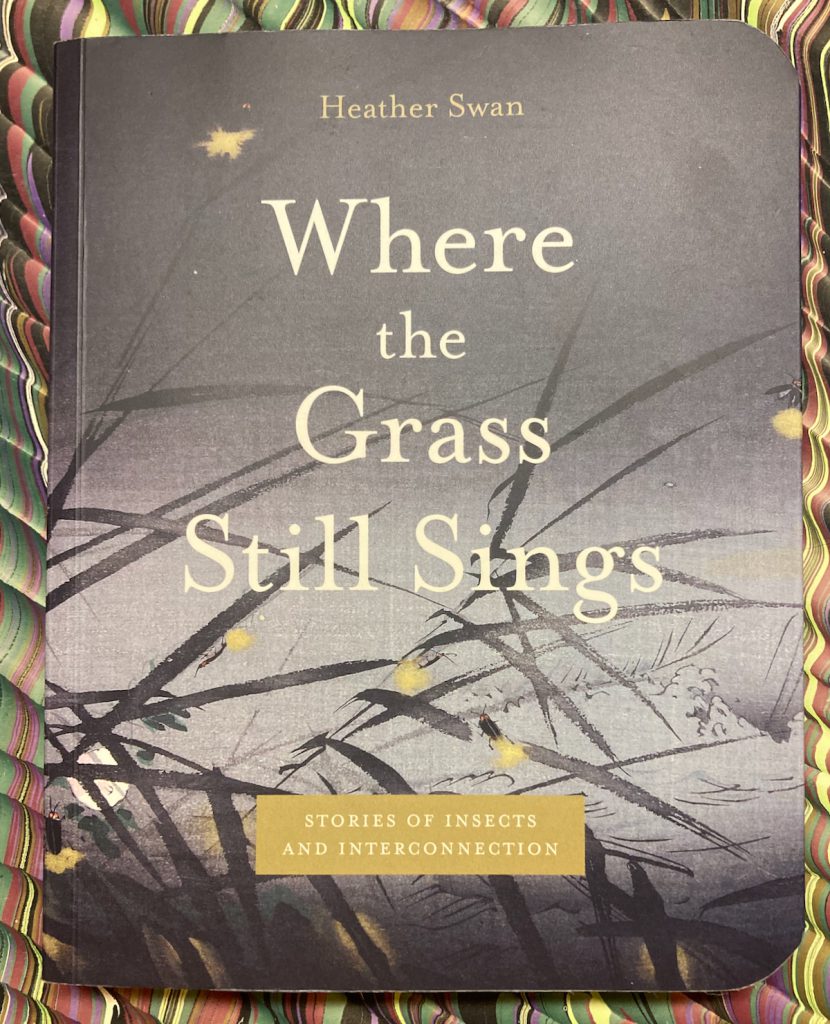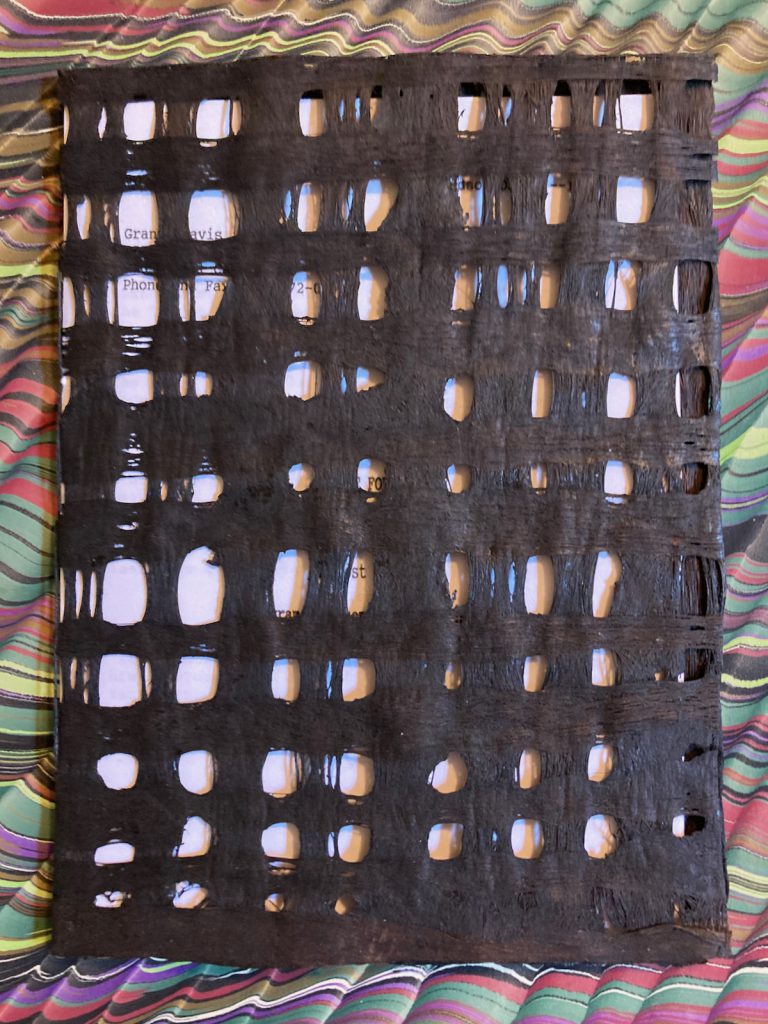
— Romance in the Library. The Romance Novel in English. Gallery Guide. [Cover title]. Illustrated. [64] pp. The Lilly Library, [2024].
Curated by Rebecca Baumann, this remarkable exhibition, Romance in the Library, likely the first of its kind, charts a revisionist history of English literature, with emphasis on women as readers of novels from the eighteenth century to the present, and claims an oft-scorned modern-day marketing genre construct — the romance novel — as a badge of honor. In the heyday of the gothic, which included the sentimental as well as the historical and supernatural, writing novels was an economic activity open to women even while the reading of them by women (especially young women) was viewed as unsuitable. Baumann’s retrospective claim is an assertion that works pretty well, but one has to abandon one’s preconceptions to find more than superficial kinship between The Wild Irish Girl or Pride and Prejudice and modern formula fiction. The shift from novels aimed at a genteel readership to a vast popular appetite for novels of romantic entertainment is rooted in greater educational opportunities for women at all economic levels and the nineteenth-century achievement of near universal literacy. A welcome and provocative exhibition.
Jane Austen’s Pride and Prejudice (1813) is in original boards, untrimmed. The stylish yellow and red dust jacket* for Boy Crazy by Grace Perkins (1931) is spectacular (and it’s inscribed to Upton Sinclair)! I wish I had taken a picture.
[lightly edited for clarity 16 Nov.]
* here’s an image of another copy of the book :

— — —
— Kasper van Ommen. Joseph Scaliger. His Oriental library, and the meaning of scholarship. [Cover title]. Illustrated. Brill, [n.d.].
——. Josephus Justus Scaliger. Sieerad van de Academie. Ornament of the Academy. [Cover title]. Text in Dutch and English. Illustrated. [Universiteit Leiden, 2020].
Two illustrated monographs on the great sixteenth-century polyglot and polymath Joseph Scaliger (1540-1609).
— — —
— The Dagon Collection. Auction Catalogue of Items Recovered in the Federal Raid on Innsmouth, Mass. Edited by Nate Pedersen. Cataloguing by Rebecca Baumann, with assistance from Jonathan Kearns. Illustrations by Liv Rainey-Smith and Eduardo Valdés-Hevia. Layout and Design by Andrew Leman. [PS Publishing, January 2024].
A catalogue of imaginary objects, rigorously described, with their history in vignettes by a wide variety post-Lovecraftian authors. Lot 13, The Geometry of Nowhere, is a dizzying book ; and lot 33, the Tiffany Lamp, is an unsettling piece.
— — —
— Michael Connelly. City of Bones. Dennis McMillan, 2002.



